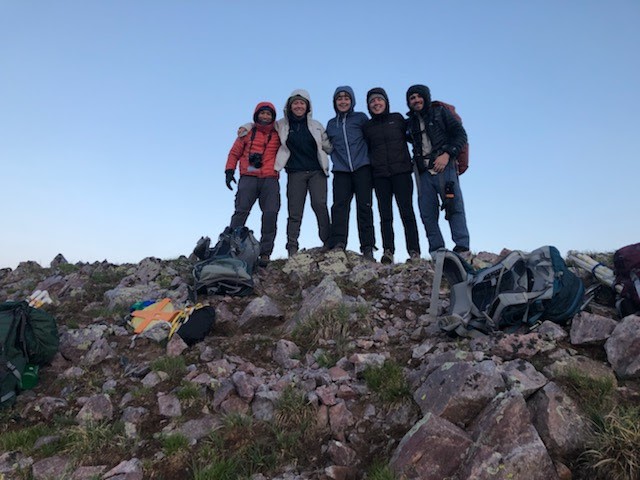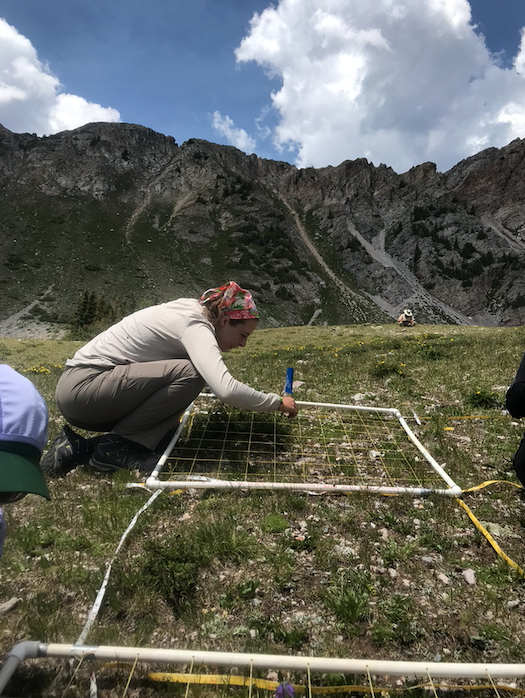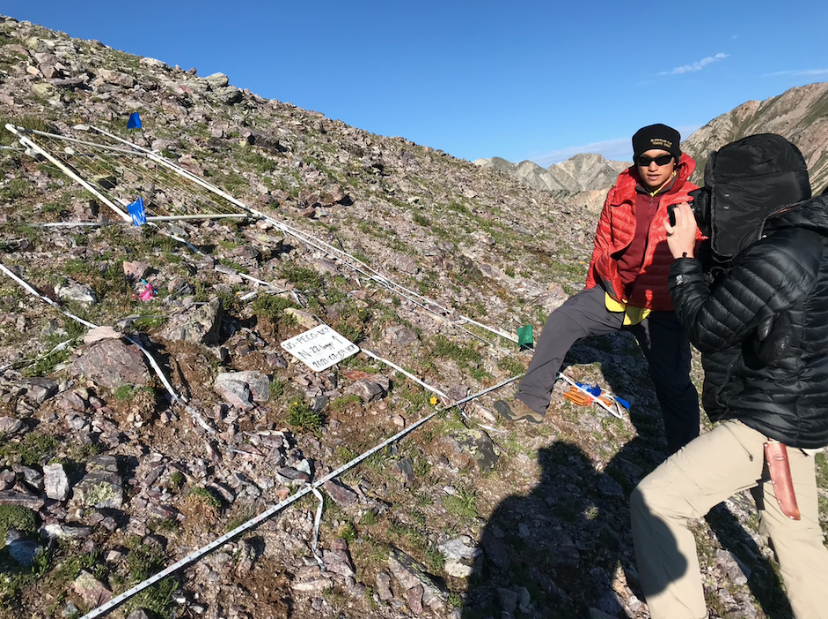My name is Tai Mei Chang, I am a wildlife biology major at Colorado State University and I was a 2021 Siegle intern! Being able to work for the Colorado Natural Heritage Program as a Siegle Intern this past summer was one of the most educational and influential experiences in my college career. Every week I was able to work on a different project which allowed me to learn so much more than just working on a single project all summer. The projects that I had the opportunity to work on were: Rifle Ranch riparian restoration, Roaring Fork Valley plant monitoring, Preble’s Meadow Jumping Mouse, New Mexico GLORIA project, San Luis Valley rare plant monitoring, and lastly Prairie Dog management in Wyoming. Through these incredible projects, I was able to discover new passions in alpine plant monitoring while practicing my current passion for wildlife conservation.
Not only did I get to explore parts of Colorado I would have never had access to, but this internship also allowed me to travel to neighboring states and understand the different plant and wildlife species that live in mountainous regions compared to grasslands. For example, working at alpine elevations the primary species we saw were pika, bighorn sheep, moose, and marmots. However working in the grasslands we saw predominantly pronghorn, coyote, prairie dogs, and rattlesnakes. It was so fascinating getting familiar with the ecology of these areas where conservation practices are taking place.
In addition, getting to work with like-minded people in the natural resources field made this internship experience even better. While most work weeks are you and one other intern with a mentor, the first week of work working at Rifle Ranch was so much fun because all 12 of us interns got the chance to get to know each other and work together on riparian restoration. That week really solidified the fact that we all wanted to learn as much as we can and work together to make this summer memorable by working hard and supporting each other in the research projects that we were working on together. It also was a great week to bond with your fellow interns and also get to know the mentors better and why they wanted to go into the natural resources field and how they got to where they are today.
I definitely know so much more about the relationship between wildlife and humans along with wildlife and plants. My plant ID and scat ID skills have improved so much and being able to work with rare plant species and see so much wildlife was worth all the sore muscles from hiking and eating camp food. Seeing how factors like private landowners play a key role in conservation helped me understand the logistical and financial aspects of the natural resources field as well which I feel a lot of us don’t get enough exposure to. Overall this summer has taught me so much and I will continue to use the skills learned in this internship and put them toward my future career.
A couple of highlights in this internship include working on the GLORIA project in New Mexico’s Pecos Wilderness. The GLORIA (Global Observation Research Initiative in Alpine Environments) Project takes place at different alpine peaks and gets monitored for global climate change research every 5 years. During this week we backpacked 12 miles to the base of 4 peaks around 12-13,500 feet and each morning we would monitor a different peak. We had to wake up at 3 am to be on the trail by 4 am and start work at sunrise in order to complete all of our work before the afternoon thunderstorms roll in. While this was a very physically demanding week, it was one of my favorites as working on a mountain summit at sunrise every morning was an incredibly beautiful experience that you rarely get to be a part of. In addition, I learned so much about alpine plant species and how climate change impacts these ecosystems the most which were something that I had very little knowledge or exposure to beforehand. Setting out grids and plots to conduct research on top of a mountain range allowed me to learn new techniques and methods for obtaining data and allowed me to compare and contrast the data from the 5 years prior. In addition to plant monitoring, we saw so much wildlife like bighorn sheep, pika, marmots, and lots of bird species!

In the end, I would 100% do this internship all over again if I could. I learned so much, met so many amazing people, and work on a variety of amazing projects. Getting to work with important organizations like the US Forest Service, US Agricultural Service, National Park Service, and Colorado Parks and Wildlife under the Colorado Natural Heritage Program opened my mind up to the possibilities of potential jobs that are out there in natural resources. I never knew fieldwork could be so fun and exciting until this summer and I can’t wait to use what conservation practices I learned from this internship on future fieldwork projects.






